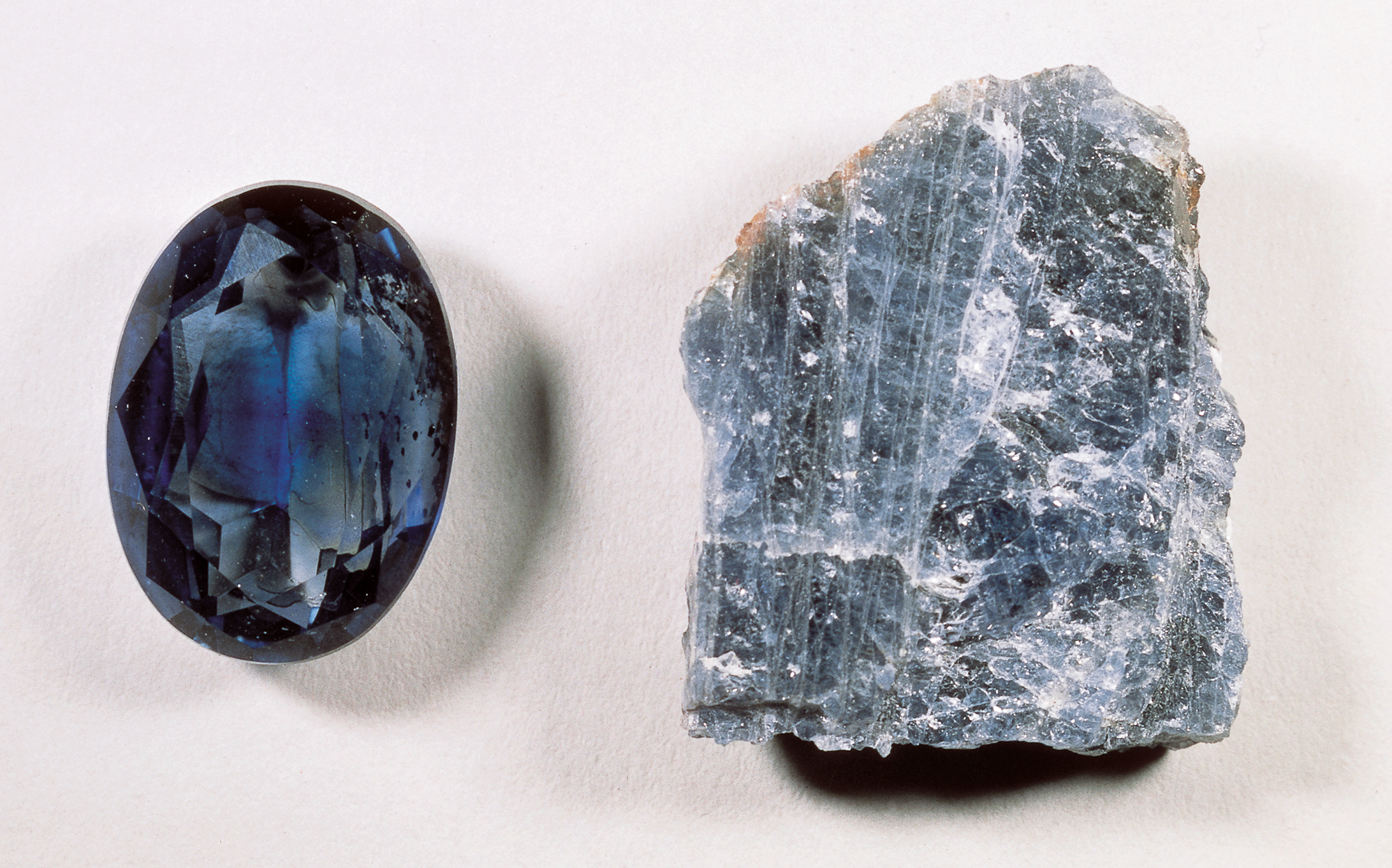Sapphire, a hard and clear gem, is a variety of the mineral corundum. The best-known sapphires are blue. Their color results from small amounts of iron and titanium in the stone. Sapphires are also found in many other colors, including yellow, green, white, black, violet, and orange. The red variety of corundum is known as a ruby.

The most valuable sapphires once came from Kashmir, in India. They are a magnificent cornflower blue, the color to which all sapphires are compared. Today, Thailand is the most important source of blue sapphires. Blue and fancy sapphires are also found in Myanmar, Sri Lanka, Australia, and the state of Montana in the United States.
Star sapphires contain needles of the mineral rutile that reflect light in six starlike rays. The most highly prized star sapphires are blue. Black or white star sapphires are less valuable. One of the largest blue star sapphires, the Star of India, weighs 563 carats, or about 4 ounces (110 grams). It is on exhibit in the American Museum of Natural History in New York City.
Among minerals, sapphires and rubies rank second only to diamonds in hardness. For this reason, sapphires are sometimes used as abrasive or polishing agents. Large numbers of inexpensive imitation sapphires are manufactured every year. But the natural stones have maintained their high value because of a demand for the real gems. Gemologists (gem experts) can distinguish between imitation and natural sapphires. Sapphire is the birthstone for September.
